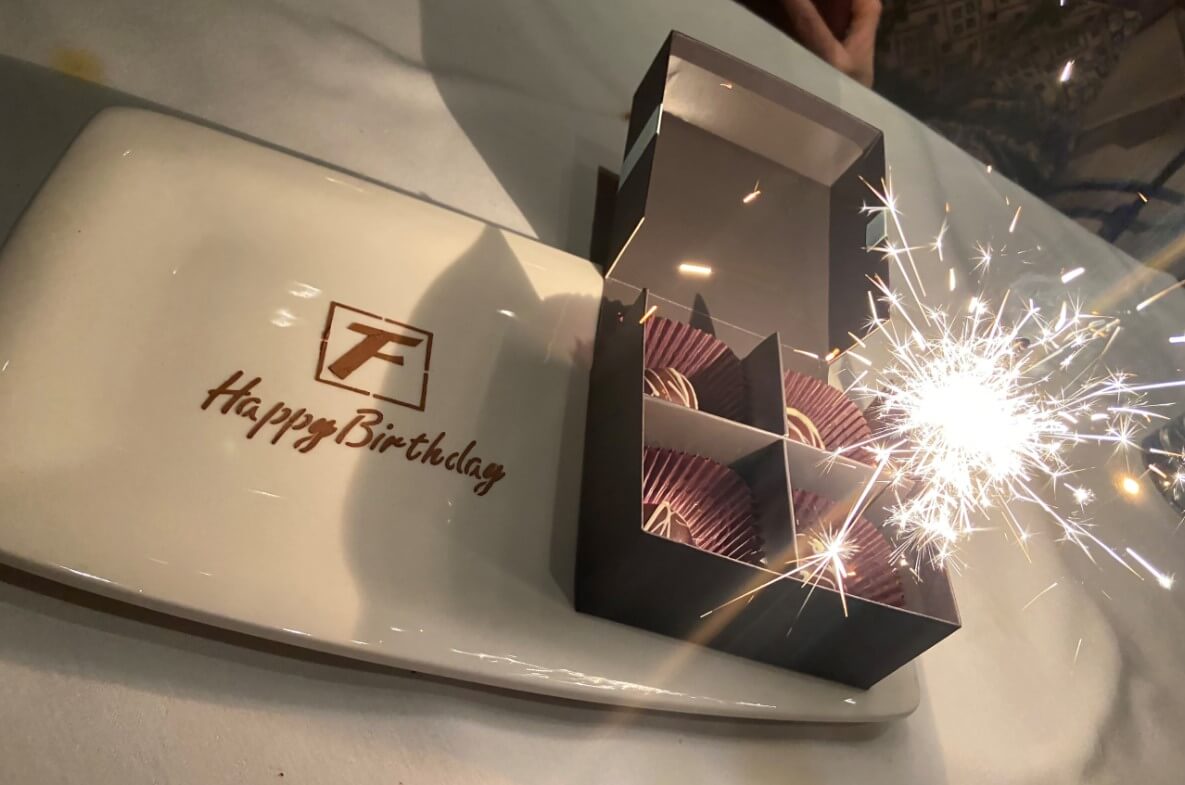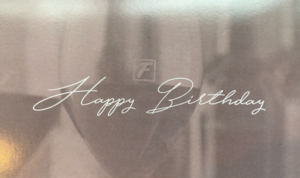
Sparkler vs. candle? Which is the better metaphor for building a remarkable customer experience?
My teenage son has good (and expensive) taste in food, so he chose to celebrate his birthday at Fleming’s Steakhouse. When I booked the reservation on OpenTable, a restaurant booking app, I noted that we were celebrating his birthday.
Most sit-down restaurants will bring out a (usually) complimentary dessert with a candle and have some of the staff sing “Happy Birthday” to the guest of honor. That’s fun if only to embarrass the birthday boy or girl, but it’s not necessarily a remarkable experience because it’s become so typical.
Fleming’s Steakhouse made it clear that they weren’t offering the “typical” experience when, immediately upon being seated at our table, the maȋtre d’ presented my son with an envelope containing a birthday card. The front of the card said “Happy Birthday” in script letters, and the inside stated in print: “Happy birthday to you. Thank you for celebrating with us. Best wishes from your friends at Fleming’s Prime Steakhouse and Wine Bar.” Someone then wrote “And many more!” in ink at the bottom.
Honestly, if that’s all Fleming’s had done, I would have been impressed, because they used the information they had at their disposal—the note I included with the reservation—and made my son feel special from the moment he sat down.
So many companies neglect to do this. Think about how many companies know your birthday because you’ve filled out a form or entered it online or had to show your driver’s license. The DMV, airport security, the hotel check-in desk, bartenders and bouncers, any store selling alcohol or cigarettes, insurance brokers, mortgage brokers, bankers, and so many more—they all know our birthday.
Now think about how many of them have ever wished you a happy birthday.
The most fascinating time to test this theory is on your actual birthday; see how many times you can show your ID, and count the number of people who notice it’s your big day. (Full disclosure: This happens to me more often than most since my birthday is on Christmas Day, December 25th!)

As we enjoyed our meal at Fleming’s, we couldn’t help but wonder what the “free dessert” would be, and after seeing the card, we suspected it might not be “typical.” Even my kids pointed out that it was likely to be something special; there was anticipation building at the table.
Fleming’s did not disappoint.
Sure enough, the waiter brought out a beautiful box containing four handmade chocolate truffles atop a plate with “Happy Birthday” and the Fleming’s logo stenciled in cocoa powder, along with a sparkler instead of a candle (which, let’s face it, is way more cool).
Related: Why You Should Wish Your Customers A Happy Birthday
What happened next is key: Everyone pulled out their phones to take a picture of the sparkling chocolates—the kids to share on Snapchat and Instagram Stories, and the adults to share on Facebook. No one told us to do that; it was just an automatic response to a “shareable” moment.
Again, the sparkler alone would have likely made this experience stand out compared to other birthday experiences, but it was the bookended combination of the greeting card and the special dessert that made it so memorable—and shareable.
The candle vs. sparkler comparison is a great metaphor for customer experience because it perfectly encapsulates the difference between ordinary and extraordinary. Of course giving a customer a free slice of cake and a candle on their birthday is a nice gesture, but since virtually every restaurant does the same thing, it is not necessarily remarkable.
So find a “candle” in your customer experience and see if you can upgrade it to the way-cooler “sparkler.” Your customers will thank you, and they’ll be much more likely to share their positive experience with friends, family, and social media followers.
Excerpts from The Experience Maker: How To Create Remarkable Experiences That Your Customers Can’t Wait To Share, which is now available on Amazon, Barnes & Noble, or your favorite bookstore.
